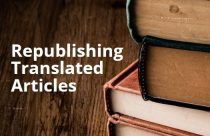Consider Publishing in Taylor & Francis Journals – Here’s Why

If you’re going to publish your research, you should aim to publish in a reputable journal. Researchers trust these journals because they publish accurate and high quality research. They ensure their publications go through rigorous quality control, something we all know as “peer review”. This, and their expert editorial board, ensures they consistently publish respectable research. They are also indexed on databases such as PubMed or Scopus, so your article is more likely to be discovered by other scientists in your field. This means more opportunities for citing, which is good for you in academic publishing as well as the journal. Here comes the name Taylor & Francis.
A Legacy of Academic Publishing
Taylor & Francis (T&F) has been committed to publishing high quality scholarly information for more than two centuries. They pride themselves on partnering with world-class well-renowned authors. Taylor & Francis publication areas focus on Science, Technology, Medicine, Social Sciences and Behavioral Sciences. They publish books, journals, textbooks, eBooks and reference works. All this makes them one of the key publishers in academia.
Taylor & Francis Benefits the Research Community
Taylor & Francis aim to help their readers perform their jobs efficiently by providing educational material online. Their website “tandfonline” has world class resources. A community of experts is required in publishing and Taylor & Francis help all parties of this community. This includes librarians, authors, societies and editors.
Librarians:
Look at the “Librarian Resources” page for information about products, account support and general library news on the latest thinking from librarians. What a great way to keep up to date with all things library.
Editors:
Even if you’re not an editor, or never aspire to be one, have a look at the “Resources for Editors” page on the Taylor & Francis website. Information includes the role of the editor, policies and guidelines, ethical considerations and everything that will be good for the journal. This will give insights into the editor’s role and you can use the information to further understand the process. It may even make your paper submission go a bit smoother if you understand what editors are looking for.
Societies:
Partner up with Taylor and Francis and they will keep your society up to date, invite you to events, send you tips and best practices for editors as well as new features. This will be helpful for your publishing program.
Authors:
The website provides a wealth of information for authors on how to get your article published.
Informative Website
All the information you need as an author is available on the Taylor & Francis website in a step by step format. There are several pages on the Taylor & Francis website that give advice on all the aspects of your article preparation. It is worth reading through the “Writing your paper” page, even if you are not ready to write up your research yet. It gives great advice and information on the different sections of a paper, the different types of articles, how to format images and tables and how to cite and reference.
Easy Publication Process
Once you are ready to write up your research, have a look at their publication process. They have broken it down into eight steps as follows:
- Research the journals you want to submit your article to. Learn more about your chosen journal’s aims and scope, their style, audience and submission process.
- Write a draft of your article using the style and guidance from the journal you wish to publish in. Ask your mentors and colleagues to proof read your final draft.
- Use their checklist to ensure you have complied with all their requirements and submit your paper.
- The journal editor will perform an initial assessment of your article to ensure it matches the journal’s scope.
- The next step could take a while, this is when your paper goes to two or three peers for review.
- Once reviewed, you need to “revise and resubmit” your paper.
- After another review, and if the editor is happy with the final version, your article is accepted.
- This is the best step: your article is published!
On the Taylor & Francis website, you can browse through journal articles by subject, or you can search using keywords. Once found, you can print, email and even share them via social media. You can keep up to date research published in your field by signing up for email alerts.
As you can see, their website is full of valuable information and is user friendly too. Their slogan says it all: “Discover. Learn. Share.”
The downside is that if your library does not subscribe to Taylor & Francis journals, you will have to pay for the articles. However, they also offer Open-Access journals.
No Subscription? Go Open-Access
Taylor & Francis offers open-access (OA) journals too. These journals cover a wide range of topics. In fact, they all stand up to the high standards of their subscription-based journal articles as they go through the same rigorous peer review system.
As an author, you can also choose to publish your article in one of their hybrid journals by paying an article publishing charge (APC). Using this option you can publish your article in a subscription-based journal, but with open access.
Publish in a Taylor & Francis Journal
We think it is important to have a publication in a Taylor & Francis journal. Their history as a reputable publisher and high ratings mean their journals are well known by researchers. This means that journal articles published in Taylor & Francis journals are more likely to be discovered and read. This translates into more exposure for you, as a researcher. It provides more opportunities for citations and more opportunities to become known in your field. This will help you move forward in your career as an academic.
What other reputed journals do you consider as a researcher while publishing your research? Please share your thoughts with us in the comments section below.









